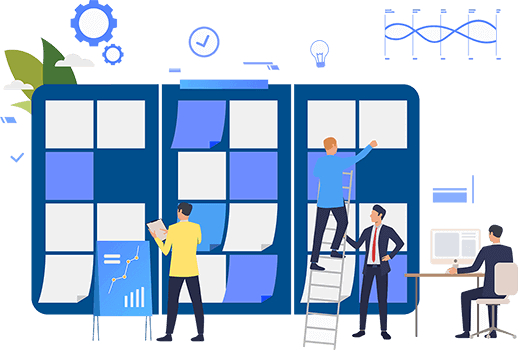Something that differentiates animals from other organisms is their ability to voluntarily carry out actions using their muscles. They do this by muscle cells changing length, which is known as contracting. There are three types of muscle, which are distinguished by their structures and functions. These are cardiac, skeletal and smooth muscle. Here I shall be comparing the structures of cardiac and skeletal muscle and looking at how their histological, structural and functional differences allow them to carry out their specific roles more effectively.
Don't use plagiarized sources. Get Your Custom Essay on
Compare and Contrast Cardiac and Skeletal Muscle
Just from $13/Page
Get Help With Your Essay
If you need assistance with writing your essay, our professional essay writing service is here to help!
Essay Writing Service
Cardiac muscle is found only in the heart and causes contractions, in the heart called systole, which pump the blood out of the heart and around the body supplying the oxygen and other vital substances to cells. Skeletal muscle is attached to tendons, which in turn attach to bones. The contractions of skeletal muscles cause the tendons to pull on the bones, which results in movement of, for example, an arm.
There is only one similarity between the structures of cardiac and skeletal muscles. Both their structures are striated (striped), formed by actin and myosin myofilaments. They are tightly organised into repeating patterns so that actin can slide over the myosin during contraction.
Figure 1 shows one of those repeating units in cardiac and skeletal muscle, called a sarcomere. For contraction to occur in cardiac and skeletal muscle, the actin filaments slide over the myosin filaments in a process known as the sliding-filament theory. So in figure 1 the thin pink filaments would slide over the dark blue filaments (not true colours). Myosin heads are attached to the actin. Adenosine triphosphate (ATP) induces the dissociation of the myosin head, the myosin head then attaches again to the actin and eventually inorganic phosphate (Pi ) is released changing the angle of the myosin head, causing the actin filaments to slide over the myosin filament. This causes a decrease in length of the I band but the A band always stays the same length.
One of the main differences between the two types of muscle is in the way that their contractions are brought about. If one wanted to raise their arm, their brain would produce an action potential via the somatic nervous system (SNS). The action potential will lead to a muscle action potential and the T-tubules will depolarize and open calcium ion (Ca2+) channels, leading to cross-bridge cycling, where the actin and myosin slide past each other and cause the skeletal muscle to contract, lifting the bone with it. So the muscle will not contract without the input of the nervous system.
Cardiac muscle is also connected to the nervous system. But as contractions are involuntary, cardiac muscle is connected to the autonomic nervous system (ANS). However, unlike in skeletal muscle, the actual action potentials that stimulate muscle contraction are created by myogenic cells in the heart. Myogenic means that it is the cells themselves that create the electrical action potentials, without the need for any external input. The cells are located in the Sino Atrial Node (SAN), which itself is located by the right atrium; the cells in the SAN are known as the pacemaker. They produce a pacemaker potential “which sets the frequency of action potentials and thus the intrinsic rhythm of the normal heart.” The ANS, connected to the SAN, only modulates the heart rate, with the sympathetic nervous system speeding up the heart rate ready for the fight or flight reaction and the parasympathetic nervous system slowing the heart rate down.
It is important that the heart is controlled automatically so that we are not conscious of the heart beating, because it would be almost impossible and probably exhausting for us to have to consciously think about making every single heart beat, especially when we are asleep. Moreover, because the heart is myogenic, there are benefits for transplants because the heart muscle can continue beating while the heart is being taken to the new body.
Skeletal muscle must be under voluntary control so that every action can be carried out consciously, such as picking up a cup. If it were automatic there would be no conscious control of when the muscles should contract and our limbs would not be under our control. Nevertheless in reflex reactions, the skeletal muscle does come under the control of the ANS. For example, if one’s hand was to touch a hot object, the ANS would react following a reflex arc of stimulus, receptor, sensory neuron, relay neuron, motor neuron, effector, response; the arm would automatically move away from the heat source. Generally, compared to the beating of the heart, there is no such pattern in our voluntary skeletal muscle contractions thus an automatic myogenic rhythm of action potentials are not required in skeletal muscles.
Looking at a fasciculus from both a cardiac and skeletal muscle shows that they are structured slightly differently. Figure 2.1 and Figure 2.2 (see below) show simplified versions of the structure of both muscles. Figure 2.1 shows an example of skeletal muscle. It is made of long thin cylindrical fibres, each being innervated by a single somatic alpha motoneuron. The axon enters the muscle and branches, connecting to single muscle fibres.
In cardiac muscle the fibres are linked together by a type of intercalated disc called a gap junction. Also the fibres are held together by adherens junctions. These strengthen the overall structure of the cardiac muscle so the forceful contractions in the heart don’t tear the fibres. The gap junctions are vital for the functioning of the heart. They allow the electrical signals produced from the SAN to pass between muscle cells so they all contract in a synchronised way and the atria followed by the ventricles undergo systole. The heart has Purkinje fibres that conduct the action potential so that they go from the SAN in the right atrium all the way to the left ventricle. Damage to cardiac muscle fibres may cause unsynchronised contractions. This irregular and fast contraction of the heart is called fibrillation. If this occurs in somebody, without treatment they are likely to die. It can be treated by a large electric shock delivered across the chest by the use of a defibrillator. This aims to stop and then restart the APs from the SAN and thus for the heart to beat regularly again.
Cardiac and skeletal muscle will both react to a single action potential by producing a single twitch response. When the frequency of signals increase, skeletal muscles show summation, where two APs, which occur very close together, will result in one stronger response rather than two normal responses. Eventually a tetanus can occur and instead of simply undergoing a series of single twitches for each action potential, the muscle remains in a contracted state for brief periods, which is far more efficient. This tetanus occurs because the refractory period is a lot shorter than the time it takes for a single cycle of contraction and relaxation.
In cardiac muscle cells however, the duration of the action potential is a lot longer, due to slowly activating calcium channels and the T-tubules being relatively longer. Because another action potential cannot occur until the response of the previous action potential has been completed, cardiac muscle cannot undergo a tetanus. This is extremely important for cardiac muscle because time is needed for the heart to sufficiently fill up with blood before the next action potential arrives. A tetanus would prevent this happening and the heart would undergo systole and relaxation (diastole) at times when there is very little or no blood in the heart. Again, fibrillation is likely to occur. Due to the fact that cardiac muscle relaxes fully between contractions, it doesn’t tire like skeletal muscle does. This is a benefit for cardiac muscle because if one’s heart started to tire one would get angina and some areas of cardiac muscle may start to die.
Due to the heart being constantly active, a lot more ATP is needed in cardiac muscle cells than in skeletal muscle cells, which only contract when required to. Therefore cardiac muscle has a larger number of mitochondria than skeletal muscle. Cardiac muscle undergoes constant oxidative phosphorylation to provide the ATP required for the actin to slide over myosin and thus for the muscle to contract. This means the cardiac muscle also requires its own supply of oxygen and respiratory substrates to respire aerobically. These are supplied via coronary arteries, which branch off from the ascending aorta. Having this supply and consequently producing a lot more ATP, is very effective for contractions. Skeletal muscle though, does not have as many mitochondria because it contracts relatively less frequently and does not need the constant supply of ATP.
Relatively there is a huge difference in the length of a cardiac muscle fibre and a skeletal muscle fibre. Each cardiac fibre is up to 100µm whereas each skeletal fibre is between a few mm to a 10cm . A muscle fibre is also known as a muscle cell. Most cells, including cardiac muscle fibres (cells), have one nucleus. Skeletal muscle fibres have many nuclei along the fibre (figure 2.1).
This can be explained by looking again at the lengths of each type of fibre. Each skeletal muscle fibre is at least ten times the length of a cardiac muscle fibre. It would not be very effective for skeletal muscle to have just one nucleus to supply the whole length of the cell. The rough endoplasmic reticulum, which is positioned in the cell near the nucleus, has ribosomes on its surface where polypeptides are compiled. Therefore even if the nucleus was positioned in the middle of the cell, any polypeptides or proteins will be synthesised near there and would require ATP to transport it to where it is needed along the length of the cell. As a result, it is far more effective to have many nuclei scattered along the muscle fibre. Cardiac myocytes (muscle cells) are relatively a lot shorter, thus one nucleus is enough to provide for the whole fibre (see figure 2.2).
Aerobic respiration is vital in cardiac muscle. It is the main source of ATP in cardiac muscle and is as a result of oxidative phosphorylation. The main respiratory substrates in cardiac muscle are fatty acids , and also carbohydrates. Approximately 1 – 2% of the ATP in the heart originates from anaerobic respiration in basal metabolic conditions. This can go up to around 9% in hypoxic conditions, but in any more extreme hypoxic circumstances not enough oxidative phosphorylation occurs so there’s not enough ATP produced for cardiac contractions, and the cardiac muscle will begin to die.
Skeletal muscles have three sources of phosphate to make ATP as and when it is required: creatine phosphate, glycogen and cellular respiration. The creatine phosphate gives its phosphate to an ADP to leave ATP and creatine. There is about 10 times the amount of creatine phosphate than there is of ATP, so this is provides a good source of ATP. Skeletal muscle only contains about 1% glycogen. It can though undergo glycogenolysis to convert glycogen to glucose-1-phosphate. This goes on to yield just two molecules of ATP, so evidently this is a limited source. Cellular respiration is the main source of ATP during lengthy exercise and when converting lactic acid to glycogen.
There are many differences between cardiac and skeletal muscle. Both have striations but beyond that, they have special unique features that make their functions more effective. The heart is myogenic making it self-sufficient whereas skeletal muscle is controlled by the nervous system. It is also vital that the heart’s cardiac muscle works without any problems, as even the slightest of problems in the heart can lead to death. Both types of muscle are important to not only humans but all animals. Cardiac muscle, as previously mentioned, is vital to our existence; without it we could not survive as it is needed to circulate oxygen and nutrients around the body. Skeletal muscle allows us to interact with our environment with ease and for humans this is most important as it lets us drive a car, use a computer or walk to university for example. For other animals it allows them to chase prey or run from a predator. And if the muscles weren’t as effective, there may be less ease when carrying out such activities.
Literature cited
Gillian Pocock, Christopher D. Richards (2006). Human Physiology – The Basis of Medicine. Oxford Core texts. Pages 84 & 85, Page 87 figure 7.6
http://www.ucl.ac.uk/~sjjgsca/MuscleCardiac.html
José Marín-García & Michael J Goldenthal (2002) – ‘The Mitochondrial Organelle and the Heart’, Rev Esp Cardiol, Volume 55, Issue 12, pp. 1293 – 1310, ISSN: 1579-2242
http://users.rcn.com/jkimball.ma.ultranet/BiologyPages/M/Muscles.html







